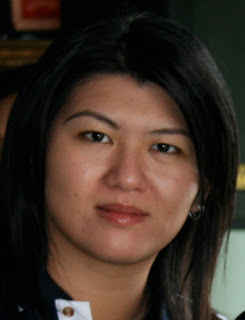
ok, first photo is of some of busy people in Surgical ICU. Note our hardworking nurses, Dr. Izzati & Dr. Nurul (surgical).
Anyway, the Chest Xray I've got here is of a 50 plus year old lady who has had a prosthetic metallic mitral valve replacement. She's basically come in with severe breathless. A&E saw this Chest Xray and thought she was in severe pulmonary oedema, gave her frusemide and intubated her & admitted to SICU.
On initial history taking from her relatives, she has been unwell for the past 5 months, easily irritated, not eating well, having chronic dry cough WITH on average once weekly haemoptysis. She has no previous history or contact of pulmonary TB. She normally takes warfarin for her metallic mitral valve replacement.
What's her INR or clotting profile ?
It was so high, it was beyond the scale readable to the machine !! & yes, she was having pulmonary haemorrhage visible in the endotracheal tube.
She was very unwell & went into Acute Respiratory Distress Syndrome (ARDS) and we managed her to improve her lungs or rather her ventilation after a couple of days. Magic, isn't it ?
At this point, it has to be Tuberculosis until proven otherwise. We sent 3 sputum samples and so far negative, and the PCR AFB is negative. We note that she has a hard enlargened left supraclavicular node.
Her ventilation requirements have improved and right now she is awake, and we are continuing to keep her on heparin infusion for her MVR.
What's our working diagnosis....
Could this be Wegner's granulomatosis, SLE, some other vasculitis, malignancy ?
We're still waiting for the autoimmune screen / profile to come back and she's not stable enough for a CT everything (thorax, abdomen, pelvis)
If the autoimmune screen and the CT comes back negative, what else could it be ?
Was it a warfarin overdose of the massive kind ?
Will let you know when we have the answers.
Ero Sennin




